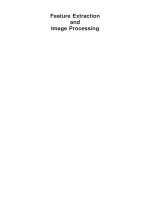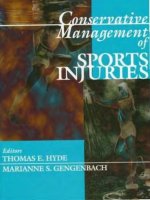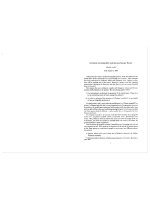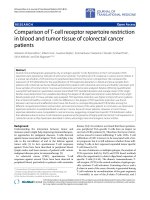T perry, m cecava beef cattle feeding and nutrition AP (1980) (1)
Bạn đang xem bản rút gọn của tài liệu. Xem và tải ngay bản đầy đủ của tài liệu tại đây (24.22 MB, 412 trang )
BEEF CATTLE
FEEDING AND NUTRITION
Second Edition
www.pdfgrip.com
This Page Intentionally Left Blank
www.pdfgrip.com
BEEF CATTLE
FEEDING AND NUTRITION
Second Edition
Edited by
Tilden Wayne Perry and Michael J. Cecava
Department of Animal Sciences
Purdue University
West Lafayette, Indiana
ACADEMIC PRESS
San Diego New York Boston
London Sydney Tokyo Toronto
www.pdfgrip.com
Cover photograph supplied by Professor Larry Nelson, Purdue University,
West Lafayette, Indiana.
This book is printed on acid-free paper. (~)
Copyright 9 1995, 1980 by ACADEMIC PRESS, INC.
All Rights Reserved.
No part of this publication may be reproduced or transmitted in any form or by any
means, electronic or mechanical, including photocopy, recording, o r any information
storage and retrieval system, without permission in writing from the publisher.
Academic Press, Inc.
A Division of Harcourt Brace & Company
525 B Street, Suite 1900, San Diego, California 92101-4495
United Kingdom Edition published by
Academic Press Limited
24-28 Oval Road, London NWl 7DX
Library of Congress Cataloging-in-Publication Data
Beef cattle feeding and nutrition / edited by Tilden Wayne Perry,
Michael Cecava. m 2nd ed.
p.
cm.
Rev. ed. of: Beef cattle feeding and nutrition / Tilden Wayne Perry
Includes bibliographical references and index.
ISBN 0-12-552052-2
1. Beef cattlemFeeding and feeds. I. Perry, Tilden Wayne.
II. Cecava, Michael. III. Perry, Tilden Wayne. Beef cattle feeding
and nutrition.
SF203.P46 1995
636.2'13--dc20
95-5989
CIP
PRINTED IN TIIE UNITED STATES OF AMERICA
95 96 97 98 99 00 BC 9 8 7 6
5
www.pdfgrip.com
4
3 2
1
Dedicated by the senior editor to
Dr. James Tilden Perry
And to quote from the Good Book,
"My son, in thee I am well pleased!"
www.pdfgrip.com
This Page Intentionally Left Blank
www.pdfgrip.com
Contents
~176176
XUl
Contributors
Preface to the Second Edition
xv
~176
Preface to the First Edition
xvn
In Memoriam: Tony J. Cunha by Lee R. McDowell
I
xix
NUTRIENT REQUIREMENTS OF BEEF CATTLE
1 Rumen Physiology and Energy Requirements
Michael J. Cecava
I.
II.
III.
IV.
2
Structure and Development of the Ruminant Stomach
Digestion of Nutrients
Quantitative Requirements of Beef Cattle
Energy
References
4
5
15
15
23
Vitamin Requirements of Beef Cattle
Tilden Wayne Perry
I.
II.
3
Fat-Soluble Vitamins
Water-Soluble Vitamins
References
26
33
34
Mineral Requirements of Beef Cattle
Tilden Wayne Perry
I.
II.
III.
IV.
Introduction
Essential Major Mineral Elements
Trace Mineral Elements
Essential Toxic Mineral Elements
References
36
37
45
49
51
vii
www.pdfgrip.com
viii
4
Contents
Protein Requirements of Beef Cattle
Michael J. Cecava
I.
II.
III.
IV.
V.
VI.
VII.
VIII.
IX.
Introduction
Amino Acids
The Role of Protein
Protein Digestion
Nonprotein Nitrogen (NPN)
Protected or Slowly Degraded Protein
Effects of Protein Supplementation on the Performance of Growing
and Finishing Cattle
Protein and Amino Acid Requirements of Beef Cattle
Protein Adjustment during Temperature Stress
References
53
53
54
54
56
58
59
62
64
66
Computer Programming of Beef Cattle Diets
Dale M. Forsyth
I.
II.
III.
IV.
V.
VI.
Sources of Ration Programs for Computers
Least-Cost Ration Assumptions and Problems
Net Energy Considerations
Solutions for Rations
Use of Spreadsheet Programs
Other Computerized Methods
68
69
70
70
71
72
The Effect of Processing on the Nutritive Value of Feedstuffs
for Beef Cattle
Tilden Wayne Perry
I.
II.
73
85
86
Processing of Feed Grains
Processing of Roughage
References
H
FEEDINGSTUFFS
7
Pasture and Forages
Michael J. Cecava
I.
II.
III.
Nutritive Value of Pasture and Forages
Types of Pastures and Forages
Pasture Crops
References
www.pdfgrip.com
91
95
97
103
Contents
ix
8 Making Hay and Haylage
Michael J. Cecava
I.
II.
104
113
116
Hay
Haylage
References
9 Silage and Crops for Silage
Michael J. Cecava
I.
II.
III.
IV.
V.
I0
I.
II.
III.
IV.
V.
VI.
III
11
117
126
126
131
132
136
Silage-Making
Silage Troubleshooting
Storing Silage
Silage Diets
Other Silage Crops
References
Concentrates for Beef Cattle
Michael J. Cecava
The Cereal Grains
Molasses
Fat
Miscellaneous Energy Concentrates
Protein Concentrates
Summary and Conclusions
References
139
151
154
156
156
164
164
THE BREEDING HERD
Breeding Herd Nutrition and Management
Tilden Wayne Perry
I.
II.
III.
IV.
V.
VI.
VII.
VIII.
Nutritional Needs of Replacement Heifers
Beef Cow Feeding Programs
A Year-Round Feeding Program for the Cow Herd
Feeding Systems That Meet the Cow's Wintering Needs
Crossbreeding and Cow Productivity
Some Considerations of Diet Effect on Estrus and Rebreeding
Meeting Supplemental Protein Needs with Free Choice Liquid Supplements
Urea Feeding Effect on Cattle Reproduction
References
www.pdfgrip.com
169
175
179
183
185
186
191
194
196
X
Contents
12
Forages and Environmental Effect on Brood Cows
Tilden Wayne Perry
I.
II.
III.
IV.
V.
13
Quality of Pasture Effect on Cow and Calf Performance
Feeding Crop Residues
Grain Sorghum Stover for Beef Cows
Corn Residue Utilization by Beef Cattle
Drylot versus Conventional Cow Herd Management Systems
References
198
199
203
204
207
211
Milk Production and Calf Performance
Tilden Wayne Perry
I.
II.
III.
IV.
IV
Choosing a Profitable Cow Size
Creep Feeding Beef Calves
Implanting Suckling Calves
Early Weaning of Beef Calves
References
214
218
220
221
223
F I N I S H I N G B E E F CATTLE
14
Starting Cattle on Feed
Tilden Wayne Perry
I.
II.
III.
15
The Program
Starting New Cattle on Corn Silage
Feeding Regimens for New Feeder Cattle
References
227
232
235
241
Feeding Stocker Cattle
Tilden Wayne Perry
I.
II.
III.
IV.
V.
VI.
16
Feeding Programs for Stockers
Controlled Growth of Stockers
Winter Gain Effect on Summer Pasture Gain
Pasture Management Effect on Stocker Performance
Grain Feeding Levels on Pasture
Stocker Response to Monensin Sodium on Pasture
References
242
245
247
248
249
251
252
Cattle Finishing Systems
Tilden Wayne Perry
I.
Characteristics of Cattle Finishing Systems
II. Self-Feeding Finishing Cattle
www.pdfgrip.com
254
261
Contents
III.
IV.
V.
VI.
VII.
VIII.
IX.
17
xi
Recipe Feeding of Finishing Cattle
Diets for Show Calves
Fattening Bulls for Beef
Comparative Performance of Bulls, Steers, and Heifers for Beef
Feeding Holstein Steers
Cull Cows for Slaughter
Estrus Control in Heifers: Spaying versus MGA
References
266
267
269
273
274
278
280
281
Feedlot Disease
Tilden Wayne Perry
I.
II.
III.
18
Bulling or Riding in Steer Feedlots
Acidosis in Feedlot Cattle
Shipping Fever
References
284
285
288
290
Economics of Cattle Feeding
Tilden Wayne Perry
I.
II.
III.
19
The Cattle Futures Market
Custom Feedyards--What Are They and How Do They Work?
Predicting Performance and Feed Requirements
References
291
300
303
307
Environmental and Housing Effects on Feedlot Cattle Performance
Tilden Wayne Perry
I.
II.
Housing Effects
Environmental Effects
References
Appendix I
308
312
315
Implants and Nonnutritive Additives for Beef Cattle
319
Tilden Wayne Perry
Appendix II
How Much Can I Afford to Pay for Feeder Cattle?
329
David C. Petritz and Kern S. Hendrix
Appendix III
Some Current Specifications for Beef
Cattle Equipment
Temple Grandin
www.pdfgrip.com
347
xii
Contents
Appendix IV Nutrient Requirements of Beef Cattle
Tilden Wayne Perry
351
Appendix V Typical Composition of Feedstuffs for Cattle
Tilden Wayne Perry
371
Index
381
www.pdfgrip.com
Contributors
Michael J. Cecava, Department of Animal Sciences, Purdue University, West
Lafayette, Indiana 47907
Dale M. Forsyth, Department of Animal Sciences, Purdue University, West
Lafayette, Indiana 47907
Temple Grandin, Department of Animal Sciences, Colorado State University,
Fort Collins, Colorado 80523
Kern S. Hendrix, Department of Animal Sciences, Purdue University, West
Lafayette, Indiana 47907
Tilden Wayne Perry, Department of Animal Sciences, Purdue University, West
Lafayette, Indiana 47907
David C. Petritz, Cooperative Extension Service, Purdue University, West Lafayette, Indiana 47907
o.o
Xlll
www.pdfgrip.com
This Page Intentionally Left Blank
www.pdfgrip.com
Preface to the Second Edition
Livestock and poultry consumption per capita, as boneless equivalent weight,
has surpassed 170 lb (77 kg) since 1988 (Feedstuffs, November 7, 1994, summary of USDA figures) in the United States. It is interesting to note that while the
figure in 1960 was 140 lb, it had risen to 160 lb by 1967; the figure rose to 170 lb
in 1976, then dropped off a bit, but subsequently surpassed 170 lb by 1988. Of
this total, beef consumption started off at 60 lb (27 kg) in 1960, rose to a peak of
over 80 lb from 1974 to 1978, and settled down through the 70- and high 60-1b
levels to 60 lb (27 kg) by 1993. Current predictions suggest that total livestock
and poultry boneless equivalent weight will surpass 180 lb (80 kg) during the
1990s. It is proposed that the consumption of beef will remain constantmor
perhaps rise.
In order to compete with other types of meat, beef cattle producers must meet
the challenge of producing wholesome meat. It seems that consumers purchase a
growing but finite amount of animal protein each year. If the consumption of one
type of meat increases significantly, the consumption of another type of meat
probably will decline. Beef cattle nutrition, genetics, and physiology practices
have improved greatly in the past decade or two, enabling beef producers to
compete with other types of meat for the consumer's purchases. It is to the
advantage of the cattle producers to use newer techniques of producing and
marketing beef.
This second edition of Beef Cattle Feeding and Nutrition embraces and includes the very latest in production techniques, which will enable cattle producers to continue to produce highly desirable beef as economically as possible.
Tilden Wayne Perry
www.pdfgrip.com
This Page Intentionally Left Blank
www.pdfgrip.com
Preface to the First Edition
Beef cattle production is indeed an exciting discipline wherever it can be
followed in this world. In the United States, the sale of cattle for beef is the
number one source of income to agriculture by a wide margin.
Type and style of beef cattle may change for a time, and thus several extreme
types have appeared. Therefore, the author has no sections whatsoever on breeds
or types because such sections get out of date too quickly, and thus they would
appear to "date" such a text too rapidly.
Nutrition and management are based on the best interpretations of scientific
facts and the application of such facts. Therefore, even though changes are
occurring in the nutrition and management of beef cattle, in general they tend to
be more gradual. Because this text contains the latest scientific findings, such
information remains intact until newer and more refined knowledge has been
obtained.
The area of beef cattle nutrition has advanced a long way, but most beef cattle
nutritionists realize that so much remains unknown, compared to what we know
about this discipline, that it behooves us to pursue the subject diligently. A good
case in point has been the first real breakthrough in the nutrition of the rumen in
the mid-1970s; the volatile fatty acid production of the rumen could be changed
dramatically through the oral administration of a minute amount of monensin.
Beef Cattle Feeding and Nutrition is meant to be a compilation and interpretation of the latest on the subject. It is meant to represent (1) a literature review, (2)
a text, and (3) a useful handbook.
Tilden Wayne Perry
xvii
www.pdfgrip.com
www.pdfgrip.com
In Memoriam
T o n y J. C u n h a
1916-1992
Tony J. Cunha served as Editor of the series Animal Feeding and Nutrition for
almost 20 years. Because of his many years in this capacity, it seems fitting that a
brief tribute to his lifetime of service to the animal industry be included here.
Tony Cunha was born on a dairy farm near Los Banos, California, on August
22, 1916, and died after a short illness, in November 1992.
He attended California Polytechnic State University in San Luis Obispo,
California, from 1936 to 1939, and received his B.S. and M.S. degrees from
Utah State University, Logan, in 1940 and 1941, respectively. In 1944 he was
awarded a Ph.D. degree in Biochemistry and Nutrition from the University of
WisconsinmMadison, where he was influenced very much by the pioneer research of Gustav Bohstedt. He also had the opportunity to work with Drs. E. B.
Hart, Conrad Elvejhem, H. Steenbock, Karl Paul Link, and Paul Phillips.
While at Utah State University, Tony met his future wife, Gwen Smith of
Logan, Utah. Tony and Gwen were married in 1941, and they celebrated their
50th wedding anniversary on September 1, 1991. Their three daughters are
Becky Jane Mallory, Anchorage, Alaska; Sharon Marie Buddington, Lilburn,
Georgia; and Susan Ann Choinski, Conway, Arkansas.
Tony's professional career began in 1944 with four years at Washington State
University, Pullman, researching animal nutrition with swine and sheep, and
teaching production and animal nutrition courses. From there he moved on to the
University of Florida, to serve for 27 years, organizing the university's first
Animal Science Department and serving as its chairman for 25 years. In 1975, he
became Dean of Agriculture at California Polytechnic State University, Pomona.
He retired as Dean Emeritus on September 1, 1980; however, he continued to
serve as University Consultant for the next 10 years.
When Tony arrived at the University of Florida, he was an Associate Professor of Animal Science, serving with five other members of the department;
when he departed 27 years later, the Animal Science Department had grown to
49 faculty members at the Gainesville campus and seven branch experiment
stations.
Dr. Cunha's area of research was in animal nutrition. His early research dealt
www.pdfgrip.com
XX
In M e m o r i a m
with basic concepts of swine, including B vitamin and mineral requirements, and
the use of antibiotics in swine nutrition. He authored many scientific and professional articles. In 1968 the American Society of Animal Science awarded him its
most prestigious honor, the F. B. Morrison Award for Outstanding Contribution
to Scientific Research in the Field of Animal Science.
Dr. Cunha was a member of more than a dozen scientific and honor societies,
and is listed in eleven "Who's Who" type books. He provided leadership to a
number of organizations that serve the animal industry, including serving as Vice
President and President of The American Society of Animal Science, and as
Chairman of the Animal Nutrition Committee of the National Academy of Science, National Research Council.
Tony was an outstanding teacher, administrator, and researcher. In 1951 he
initiated the Florida Annual Beef Cattle Short Course, and in 1967 began the
International Livestock Short Course (in Spanish), both of which have continued
uninterrupted since then. In 1981, Tony and Gwen endowed an annual scholarship for a student majoring in animal science.
In 1976, Dr. Cunha took on the challenge as serving as Editor of this series on
Animal Feeding and Nutrition with Academic Press; in 1977, the first book was
published, Swine Feeding and Nutrition. Working with seven other authors, by
1992 a total of 13 books had been published. Tony's last book was the second
edition of Horse Feeding and Nutrition, published in 1990.
Those who knew Tony have surely missed his leadership, his intellect, his
knowledge of livestock problems and opportunities, his sense of humor, and the
sound of his unique laughter.
Lee R. McDowell
www.pdfgrip.com
1
Nutrient Requirements of Beef Cattle
www.pdfgrip.com
This Page Intentionally Left Blank
www.pdfgrip.com
1
Rumen Physiology and
Energy Requirements
Michael J. Cecava
Ruminants are found in nearly every environment where plants transform
solar energy into chemical forms. The most abundant form of renewable energy
in this world is cellulose, which is synthesized by plants in the process of
photosynthesis. Unfortunately man is not able to utilize cellulose as a foodstuff;
ruminant animals, however, do have this ability. It is the purpose of this chapter
to identify this unique capability of ruminant animals through the functioning of
their rumen. This capability is a manifestation of the evolutionary processes
which provided an alimentary apparatus capable of releasing the chemical energy
from the structural carbohydrates of plants. No mammalian degradative enzyme
is capable of "unlocking" the [3-1,4-glucosidic linkages found in plant cell walls.
However, microbes inhabiting the rumen have enzymes which cleave these
linkages.
Repeating Maltose Unit of Starch
r CH20H
CH20H ]
H/H \H !
_~oH;HH ~HH;.
.....O......~
/~
\OH H/
,
,
I
I
)
w
H
OH
H
OH
"n
Repeating Cellobiose Unit of Cellulose
,,r CH20H
i jl
"
\OH
I
H
Beef Cattle Feeding a~ut Nutrition,
Second Edition
\o
H/H
I
OH
CH20H ]
/I
\o :
H(H
~,, 'i
\OH
I
H
,H/ H
I
OH
jn
Copyright 9 1995 by Academic Press, Inc.
All rights of reproduction in any form reserved.
www.pdfgrip.com
4
1. Rumen Physiology and Energy Requirements
The major difference between starches, which can be digested by monogastric
animals, and cellulose, which cannot, is the spatial configuration about the 1,4glucosidic bond. As shown above, glucoseunits are joined by 13-1,4 linkages in
cellulose and ct-1,4 linkages in starch. This difference is one of the major factors
that led to the evolutionary development of the ruminant animal. Ruminants and
other herbivores developed symbiotic relationships with microbial populations
having enzymes capable of degrading cellulose. Thus, ruminant species are of
great value to man because they provide a means of capturing solar energy stored
in the cellulosic bonds of plants. The fermentation of ingested feeds by the rumen
microbes also has significant nutritional and metabolic implications for the host
animal that will be discussed later.
I. STRUCTURE AND DEVELOPMENT
OF THE R U M I N A N T STOMACH
The ruminant stomach is divided into four compartments, namely, the reticulum, rumen, omasum, and abomasum. The reticulum and rumen are joined by a
fold of tissue (reticulorumen fold) such that ingesta may flow from one compartment to another. Most microbial activity takes place in the rumen, so this compartment will receive considerable attention in this discussion (Fig. 1.1).
The rumen is nonfunctional in newborn ruminants, but rumen fermentation
starts within a few weeks after birth. Considerable growth of the rumen occurs
during the first months of life with the main stimulus being solid food in the
system. When the four compartments have attained their permanent relative
sizes, the rumen constitutes approximately 80% of the total stomach volume.
Very early in the life of the ruminant, a mixed population of bacteria and protozoa becomes established in the rumen. The rumen then may be regarded as a
large fermentation chamber providing a suitable environment for the continuous
culture of the microbial population.
The pH of the rumen ranges between 5.5 and 7.0, and the temperature stays
very close to 103~ which is near optimum for the many enzyme systems
contained therein. The food supply to the microorganisms is provided in a more
or less continuous manner. Contractions of the rumen wall help stir and mix
intimately the microbes and the ingesta. The moist conditions are ideal for the
reactions.
The function of the omasum is poorly understood. However, it does remove
large quantities of water from the ingesta passing through this portion of the
stomach; this may well be its sole function. The function of the abomasum is
similar to that of the simple stomach of monogastrics.
The abomasum is a glandular compartment in which hydrochloric acid and
enzymes partially hydrolyze protein. Digesta is retained in the abomasum for a
www.pdfgrip.com









